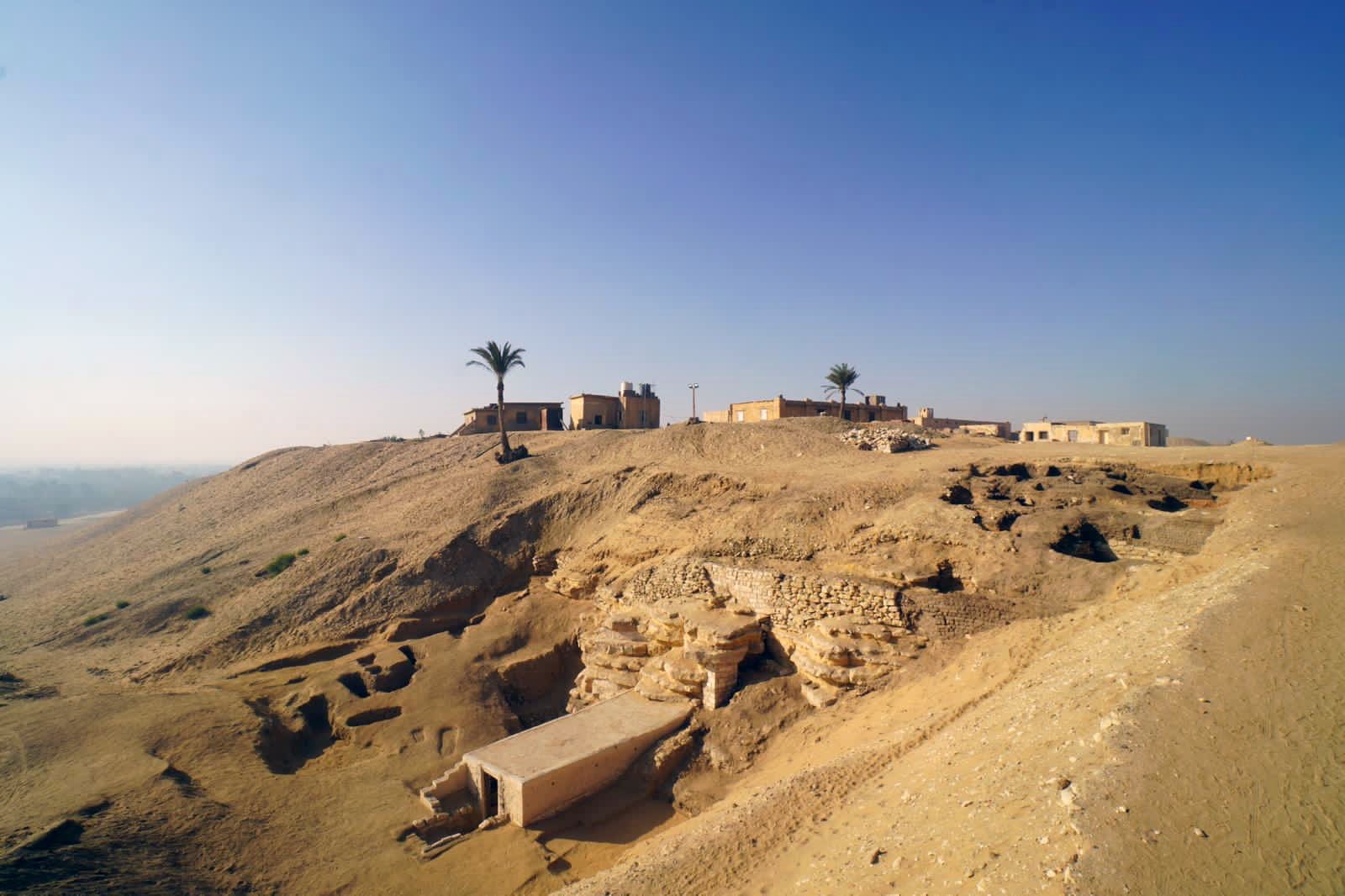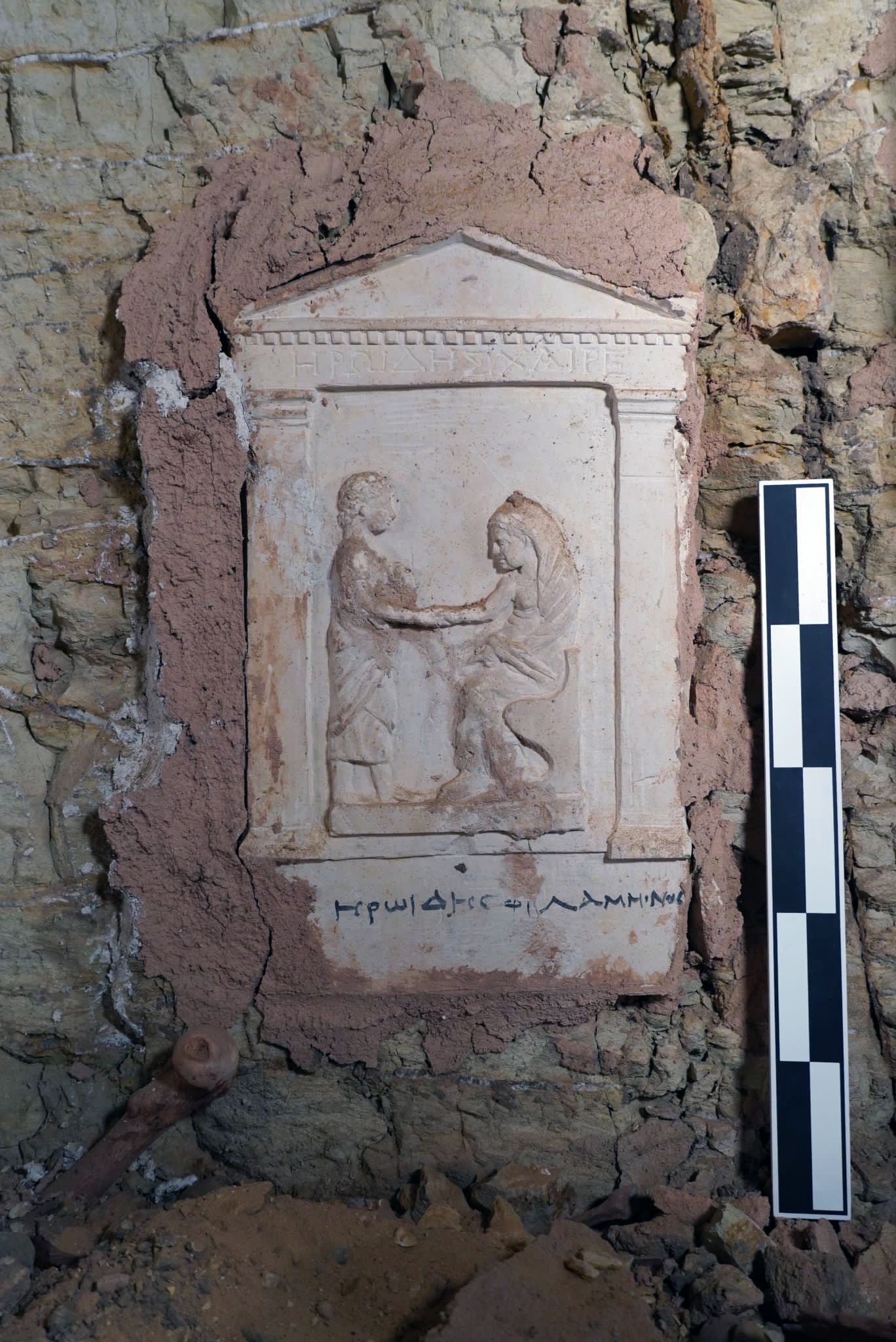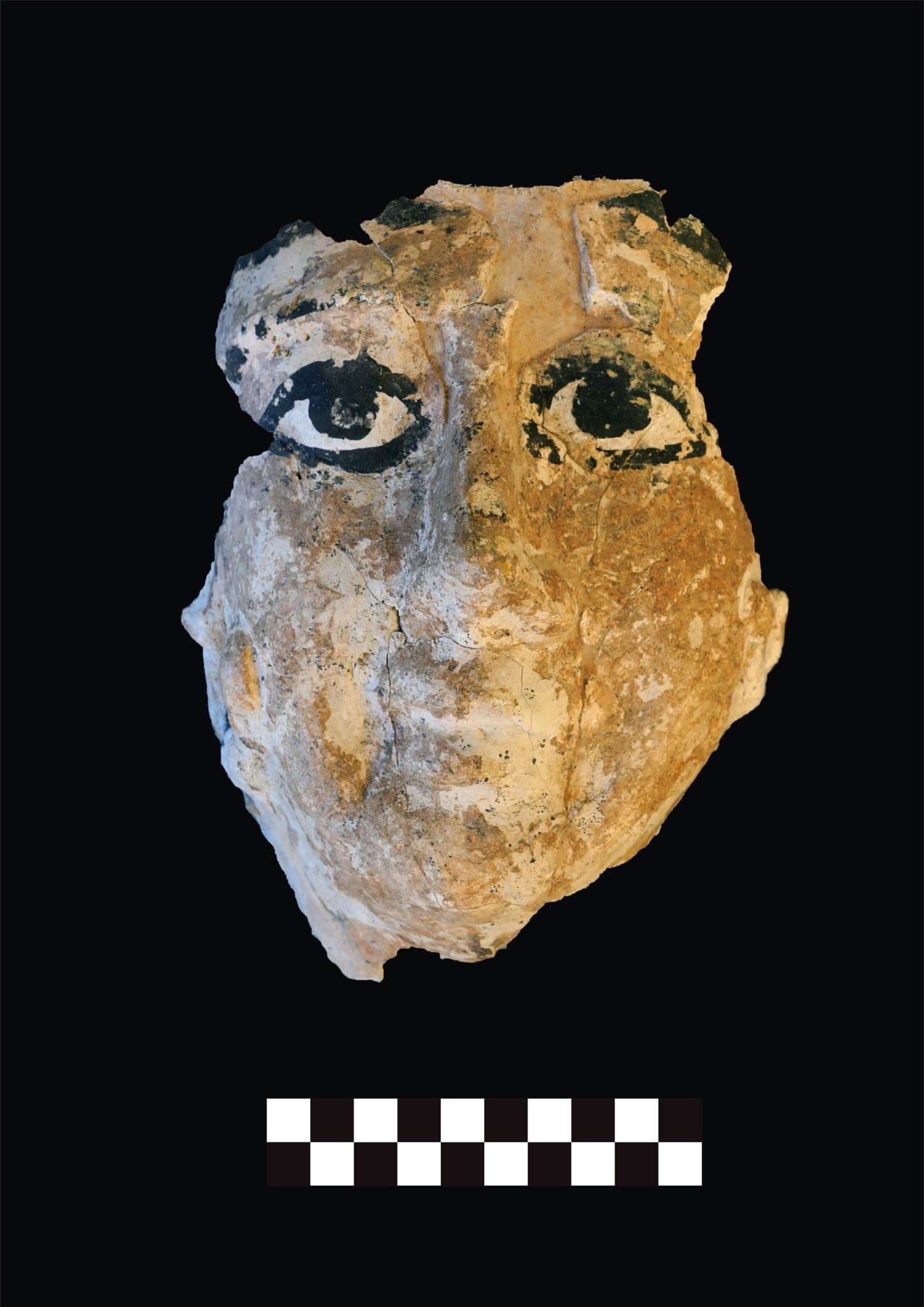Archaeologists uncover 4,500-year-old Ancient Egyptian tomb and artefacts
Remains of adult interred wearing colored mask found alongside alabaster vessel and small child
An ancient tomb believed to be more than 4,000 years old has been discovered in Egypt.
A team of Egyptian and Japanese archaeologists in Saqqara found burials, architectural elements and other artefacts during the mission. Egypt’s Ministry of Tourism and Antiquities confirmed the find on Saturday.
Among the discoveries are the remains of a human buried with a coloured mask and a burial for a small child which are believed to date back to the Second Dynasty, according to Ahram Online. The tomb dates between 2649 and 2150 BC, experts say.

Other artefacts include a coffin from the 18th Dynasty (1550-1295 BC) containing a well-preserved alabaster vessel. Burials from the Ptolemaic eras were also uncovered.
Two terracotta statues depicting the ancient Egyptian goddess Isis, a deity initially prominent in funerary practices, and the child deity Harpocrates, the god of silence and secrets in the Ptolemaic periods were also discovered.
Various amulets, pottery models and ostraca, which are pieces of broken pottery, featuring hieratic inscriptions (cursive scripts used in ancient Egypt) were also found among the trove of discoveries according to Ahram.

In a Facebook post, the Ministry of Tourism and Antiquities said: “The joint Egyptian-Japanese archaeological mission between the Supreme Council of Archaeology and Waseda University has succeeded in uncovering a rock tomb from the Second Dynasty, a number of architectural elements, burials and archaeological finds in the Saqara region.
“The mission has carried out recording and archaeological documentation of all the archaeological finds found this season.

“The joint Egyptian-Japanese archaeological mission between the Supreme Council of Antiquities and Waseda University succeeded in uncovering a rock tomb dated to Dynasty 2, along with a number of architectural features, burials, and archaeological finds at the Saqqara archaeological site.
“The mission carried out archaeological recording and documentation of all archaeological discoveries found during their work season.”
The discovery “provides invaluable insights into the history of this region,” Nozomu Kawai, head of the Japanese team, told Ahram.
Mustafa Waziri, the SCA’s secretary-general, said: “The artefacts and burials uncovered provide a window into the lives of those who lived in this ancient civilization.”
Join our commenting forum
Join thought-provoking conversations, follow other Independent readers and see their replies
Comments
Bookmark popover
Removed from bookmarks